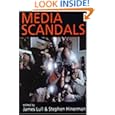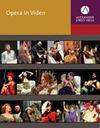Michael Jackson, known as “King of Pop”, died unexpectedly Thursday, June 25th in Los Angeles at age 50. His career began when he was 11 as part of the group the “Jackson Five”, the youngest of five brothers. He is known for his extraordinary talent in music and dance, and as a gifted entertainer. He was an innovator, most notably in the music video medium and early MTV. Jackson’s career was marred by controversy caused by allegations of personal sexual misconduct. In addition to being a musician, dancer, and entertainer, Michael Jackson was known for his philanthropy, particularly his work to help South Africa, and his composing and organizing the production of the song “We Are the World”, with proceeds going to African aid. Michael Jackson will always be known as a trailblazer in the field of pop music, and his recordings continue to break sales records.
**********
Following are selected resources for more information about Michael Jackson. In addition to sources readily available through news media, also included are books in the library, encyclopedia articles, and scholarly articles, resources that most people may not have thought about in regards to a popular music figure. These resources give scholarly, insightful, and analytical perspectives of Michael Jackson such as the meanings of his dance movements, the sociological aspects of his music videos, the religious significance in “Earth Song”, and more. Articles in languages other than English are a testimony to Jackson’s worldwide fame and appeal. Here you will also find primary resources such as books by Michael Jackson, and interviews that he gave when he was in his teens. These in-depth perspectives you would not find anywhere else, but @ your library! Enjoy.
Books and More

Jackson, Michael.
Moonwalk. New York : Doubleday, c1988. Blockson Collection
ML420.J175A3 1988

Jackson, Michael.
Number ones [videorecording]. New York : Epic Music Video, c2003. Paley Media Services
ML420.J175 N863x 2003

Jackson, Michael.
Thriller [sound recording] Library Depository
EPIC QE 38112

Lull, James, and Stephen Hinerman, eds.Media scandals : morality and desire in the popular culture marketplace. New York : Columbia University Press, 1997.
Paley Stacks P96.S29M43 1997

Jefferson, Margo.
On Michael Jackson. New York : Pantheon Books, c2006.
Paley Stacks
ML420.J175 J44 2006

Taraborrelli, J. Randy.Michael Jackson : the magic and the madness.Secaucus, N.J. : Carol Pub. Group, 1991. Blockson Collection ML420.J175T3 1991
Online Encyclopedia Articles
*****Restricted to Temple University users only. Enter your AccessNet username and password.*****
“Michael Jackson.” Contemporary Musicians, Volume 44. G
ale Group, 2004. Reproduced in Biography Resource Center. Farmington Hills, Mich.: Gale, 2009.
“Michael Jackson.” Contemporary Black Biography. Vol. 53. Thomson Gale, 2006.
Reproduced in Biography Resource Center. Farmington Hills, Mich.: Gale, 2009.
“Michael Jackson.” St. James Encyclopedia of Popular Culture. 5 vols. St. James Press, 2000. Reproduced in Biography Resource Center. Farmington Hills, Mich.: Gale, 2009.
“Michael Jackson.” Notable Black American Men. Gale Research, 1998.
Reproduced in Biography Resource Center. Farmington Hills, Mich.: Gale, 2009.
Selected Journal Articles and Book Chapters
*****Many are restricted to Temple University users only. Enter your AccessNet username and password.*****
Baker, Danny. The great Greenland mystery: Michael Jackson. Meaty beaty big & bouncy!” Classic rock and pop writing from Elvis to Oasis. London: Sceptre, 1997. 157-178 pp.
Abstract: An interview with Michael Jackson and his brothers first published in New musical express on 4 April 1981.
Burnett, Robert and Bert Deivert. Black or White: Michael Jackson’s Video as a Mirror of Popular Culture. Popular Music and Society 19:3 (Fall 1995) p.19-40. Paley Stacks ML1 .P69457
Buschmann, Gerd. Der Sturm Gottes zur Neuschöpfung: Biblische Symboldidaktik in Michael Jacksons Mega-Video-Hit Earth Song. Katechetische Blätter. Vol. 121, no. 3, pp.187-196. 1996.
Abstract: Jackson’s 1995 video Earth song plays with central biblical themes including creation, the fall from grace, the prayer of lamentation, theophany, prophecy, and resurrection. In terms of form and content,the video corresponds to a psalm of lamentation, with three parts: lament, plea, and help. Jackson appears as a prophet and modern Christ-like figure.
Campbell, Melissa. Saying the Unsayable: The Non-Verbal Vocalisations of Michael Jackson. Context 26 (Spring 2003) p.17-26.
Dyson, Michael Eric. A postmodern Afro-American secular spirituality: Michael Jackson. The theology of American popular music: Proceedings of the first conference in theomusicology, 7-8 April 1989
Abstract: The achievements of Michael Jackson are viewed as representing a postmodern form of black American secular spirituality that is primarily televisual and performance-oriented in its medium of expression, and that wrestles in poignant fashion with moral themes that reflect black cultural and religious consciousness.
Dyson, Michael Eric. Wanna Be Startin’ Something? Two Sharp Minds Contemplate the Significance of the Michael Jackson Trial. VIBE 13:10 (October 2005) p.128-131.
Early, Gerald. Three notes on the roots of rhythm. Conjunctions. Vol. 16, pp.197-208. 1991
Abstract: The success of Chubby Checker’s The twist with white audiences and the role of music in Shirley Temple’s and Michael Jackson’s films help to explain the cultural context of American rhythm and blues.
Epstein, Debbie and Deborah Lynn Steinberg. The Face of Ruin: Evidentiary Spectacle and the Trial of Michael Jackson. Social Semiotics; Dec2007, Vol. 17 Issue 4, p441-458, 18p
Garry, George. At home with Michael Jackson. Very Seventies: A cultural history of the 1970s, from the pages of Crawdaddy New York, NY: Fireside/Simon &Schuster, 1995. 87-92 pp.
Abstract: Interview with a 13-year-old Michael Jackson originally published in
September 1972.
Harvey, Lisa St. Clari.Temporary insanity: Fun, games, and transformational ritual in American music video. Journal of popular culture. Vol. 24, no. 1, pp.39-64. (summer 1990)Abstract: Music video relies heavily on viewer reactions and perceptions. Video may be related to the masked ball, in which excess and indulgence in the usually forbidden are expected. Music video allows viewer participation at a vicarious level. The dream world of video may represent a collage of aspects of society. Videos of Michael Jackson, Lionel Richie, Tina Turner, Cyndi Lauper, and Duran Duran are summarized.
Hills, Mattl. Michael Jackson Fans on Trial? “Documenting” Emotivism and Fandom in Wacko About JackoSocial Semiotics; Dec2007, Vol. 17 Issue 4, p459-477, 19p
Ihlemann, Lisbeth. Michael Jackson: Monster, maskine, myte, menneske? Musik & forskning. Vol. 23, pp.110-25. Abstract: The pop star Michael Jackson draws attention not only to his music, but also to himself as a star and a person. Jackson’s image is explored in relation to star theories developed by media studies scholars. In contrast to most stars, Jackson’s persona seems to exhibit only the extraordinar
y: He is most often perceived as a freak or an alien. Jackson’s save-the-world attitude and obvious attraction to aggressive masculinity are explored.
Lau, Thomas. Idole, Ikonen und andere Menschen: Madonna, Michael Jackson und die Fans. “Alles so schön bunt hier”: Die Geschichte der Popkultur von den Fünfzigern bis heute. Stuttgart, Germany: Reclam, 1999. 241-253 pp. Abstract: In pop culture, the idol relies on the fan as much as the fan relies on the idol. Still, the relationship between the two has changed considerably in the past 20 years, also in light of the advent of techno culture.
Mayfield, Geoff. Over the Counter: Jackson Set Still Thrilling after All These Years. Billboard – The International Newsweekly of Music, Video and Home Entertainment 120:9 (1 March 2008) p.37.
Mittel,Jason. A Cultural Approach to Television Genre Theory Cinema Journal; Spring2001, Vol. 40 Issue 3, p3, 22p.
Abstract: Argues that genres are cultural categories that surpass the boundaries of media texts and operate within the industry, audience and cultural practices. Obstacle to the development of television-specific genre theory; Types of discursive practices; Goal in analyzing generic discourses; Genre analysis with Michael Jackson’s music videos; Principles of cultural genre analysis.
Nathan, David. Feature: Michael Jackson; A “Thriller” of a Career. Blues & Soul 1004 (6 March 2008)
Olligs, Ursula. Die rhythmisch-energetische Struktur von Michael Jacksons Tanz. Musik-, Tanz- und Kunsttherapie. Vol. 9, no. 2, pp.72-86. 1998.
Abstract: As no other pop idol, Michael Jackson bases his success on dance. By means of three video-tapes, the dance-psychological research of his dancing and body language tracks sources and characteristics of this way of movement. Reference to the dance therapeutically aspects are made.
Paoletta, Michael. UpFront: Music – Michael Jackson: Now What? Billboard – The International Newsweekly of Music, Video and Home Entertainment 117:26 (25 June 2005) p.7-8.
Silberman, Seth Clark. Presenting Michael Jackson™. Social Semiotics; Dec2007, Vol. 17 Issue 4, p417-440.
Sonnega, William. Morphing borders: The remanence of MTV. TDR: The drama review. Vol. 39, no. 1, pp.45-61. spring 1995.
Abstract:World beat, a musical genre combining melodic and rhythmic features from various world cultures into a single form, has become commonplace in contemporary popular music, and has worked to break down cultural barriers. Implicit in its multilayered culturalism is the Futurist notion of a technologically generated utopia. In the past decade Music Television (MTV) has successfully capitalized on incorporating world beat into its programming, becoming a model that other artistic agencies have followed, as exemplified in the Michael Jackson music video Black and white and a recent theatrical production of Thornton Wilder’s play The skin of our teeth.
Stewart, Elizabeth and Theresa Buckland. Dance; music video. Parallel lines: Media representations of dance. London, England: Arts Council of Great Britain, 1993. 51-79 pp.
Abstract: The role of dance in music video extends across a spectrum. At one end of the spectrum is the dramatic mode, where dance operates prominently s an expressive tool; at the other end is the fragmentary dance mage, nondiegetic, unconnected to the musical producers, and perhaps nly flitting briefly across the scene. Here the moving body interacts ith video technology to form abstract visual and rhythmic patterning. his style is rarely used to present the dancing pop star, since ilmic treatment of the star is constrained primarily by the onstructive techniques of stardom. Videos featuring Kate Bush, Paula bdul, Michael Jackson, and Janet Jackson are analyzed.
Tischer, Rolf. “Heal the World”: Religion in der kommerziellen Rock- und Popmusik am Beispiel von Michael Jackson.Gotteslob im Klang der Zeit: Rolf Schweizer zum 65. Geburtstag München: Strube, 2001. 122-142 pp. Abstract: The process of secularization would seem to be unstoppable in modern society, and yet there is a constant need for religiousness. This is reflected in contemporary pop and rock music. This is exemplified by a song and video clip by Michael Jackson: In Heal the world, he appears as a messiah. Such phenomena within supposedly superficial pop culture should be taken seriously.
Tucker, Mark. Behind the beat: Michael Jackson and Prince. ISAM newsletter. Vol. 14, no. 1, pp.12-14. Nov 1984 Abstract: An examination of recent songs performed by Michael Jackson and Prince (Prince Rogers Nelson), including Billie Jean (from Michael Jackson’s 1982 album Thriller) and When doves cry (from Prince’s 1984 release Purple rain).
RL: Resource Locationhttp://depthome.brooklyn.cuny.edu/isam/NewsF84.pdf
Walls, Richard C. Bruce Springsteen; Michael Jackson: Through time and space with the changeling gods. Creem. Vol. 19, no. 6. Feb 1988
Wenzel, Ulrich. Pawlows Panther: Zu Rezeption von Musikvideos zwischen bedingtem; Reflex und zeichentheoretischer Reflexion. VIVA MTV! Popmusik im Fernsehen.Frankfurt am Main, Germany: Suhrkamp, 1999. 45-73 pp.
Abstract: A discussion of the poststructuralist debate, which has been intensely connected with videos and music television, drawing on the description of Michael Jackson’s video Black or White.
**********










